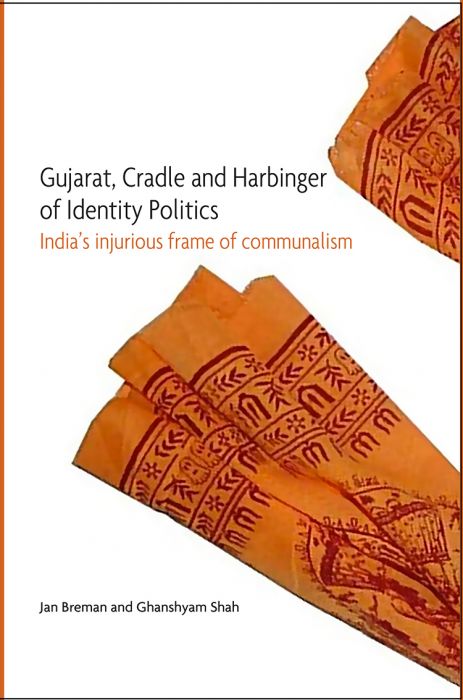
The book Gujarat, Cradle and Harbinger of Identity Politics: India’s Injurious Frame of Communalism (published by Tulika Books in 2022) attempts to argue how the idea of a homogenised religion-centric community defined by the principles of Hindutva shaped the socio-cultural fabric of Gujarat.
Consisting of seventeen articles divided into five thematic sections, the book begins by tracing the significant historical details that, over the years, have shaped the idea of Hindutva as we know it today. In Freedom Movement: Hindu and Hindutva Nationalism Ghanshyam Shah trace the dawn of the ideas around separate religious and political identities. He explains how V.D. Savarkar’s Hindutva ideology viewed all other religions except Hinduism as foreigners due to which “their devotion and loyalty to India remained questionable”. This became the foundational idea of Rashtriya Swayamsevak Sangh (RSS) — founded by Keshav Baliram Hedgewar. The article elaborates on how the main focus of RSS was to propagate “Muslims as unpatriotic, anti-Hindu, aggressive, etc.”
The chapter goes on to discuss that these ideologies were primarily on the margins until the downfall of the Non-Cooperation and the Khilafat movement. Mahatma Gandhi’s call for social reform through ‘constructive’ programmes wasn’t well-received by a few Congressmen all over the country including Gujarat, hence giving rise to militant Hindu ideologies.
The articles in the book ascend with major historical events and instances of communal violence which transformed the relationship shared by the Hindus and Muslims of Gujarat. In Communal Riots in Gujarat: Report of a Preliminary Investigation Shah gives an account of the riots which took place in Ahmedabad in September 1969 which, as he described, was “an ordinary incident sparked off by a minor incident” and other than minor retaliation nothing major was reported. However, the following days witnessed mass destruction and killing of the Muslims. The shops and houses owned by Muslims were attacked and some were set on fire, Muslims were forced to chant ‘Jai Jagannath’ and a Muslim youth was set on fire for not obeying. Muslim women were raped, stripped naked, their breasts cut off and were also mutilated by the rioters. According to Shah, the nature and the pattern of the inflicted carnage were planned, fuelled by the spread of false information and rumours by a certain group of people.
The account of instances of violence aimed to highlight the carefully engineered nature of communal riots. Breman also brings attention to the aftermath of violence. For example, the immigrant labour class was criminalized by the state functionaries as the one responsible for the carnage that took place in Surat in December 1992. Pertaining to the Surat violence, another ruthless justification for raping Muslim women was that they deserved to be raped for what Muslim men had done to the Hindu women generations ago.
Shah and Breman’s historical analysis has aimed to render a more complex understanding of the religious and identity politics of Gujarat. Their decades of empirical research and interpretation of Gujarat politics give an in-depth understanding of how the narratives demonising the Muslim community were (and continue to) propagated by the Hindu militant organizations such as Bajrang Dal, RSS and VHP[i]. Shah mentions how during the carnage of 1969 there was a constant invocation of feelings of celebration and “they [Hindus] could avenge Prithviraj against Mahmud of Ghazni after 700 years”.
Their analysis of communal tensions in Gujarat stems from a very subjective standpoint. For instance, in the story of Salim in Rural Impressions on the Mumbai Carnage Breman highlights the complex social and religious positionality of Salim, who was considered a ‘good’ Muslim by the Hindus of his locality because his thesis was based on Lord Krishna. However, his take on religious texts, especially the one titled Quran and Gita invited a series of backlash from the Muslims, and people of his community.
In Caste, Hindutva and Hideousness Shah brings attention to the ways in which the proponents of Hindutva increased their manpower by their appeal to “reform and uplift” lower castes to protect the Hindu samaj. An important thing to note here is that despite encouraging the social elevation of the lower Hindu castes, they did not reject the caste system. Hence, maintaining the superiority of the upper castes.
An important observation, that the book makes, is that despite the strong base of Hindutva organisations in Gujarat and their increased political interference in the state politics by the 70s, it wasn’t until Narendra Modi that their ideology started taking a nationalistic shape.
Narendra Modi became the Chief Minister of Gujarat in 2001 and his power increased after the large scale massacre of Muslims in the state in 2002. Shah notes, that he was successful in forming a strong ground base in the state by embracing economic and social development coupled with the emotive issue of Hindutva. Based on his Gujarat model, his ability to manoeuvre situations (or accusations) and sell dreams with his flamboyant attitude, and excellent electoral strategizing and planning Modi was able to become the Prime Minister consecutively in the 2014 and 2019 Lok Sabha elections.
In conclusion, this scholarly work offers an extensive understanding of the complex political, social and religious discourses the country is undergoing today. The book provides a historical and critical articulation of Gujarat politics, which at present serves as an ideal example of the contemporary political and developmental debates propagated on the religious and communal lines by the proponents of the majority clan.
[i] VHP stands for Vishva Hindu Parishad. An organization founded in 1964 to safeguard and propagate Hindu ideology.
***
Mansi Malhotra is a post-graduate in Gender Studies from Ambedkar University, New Delhi. She is interested in research areas riveting around gender and violence.